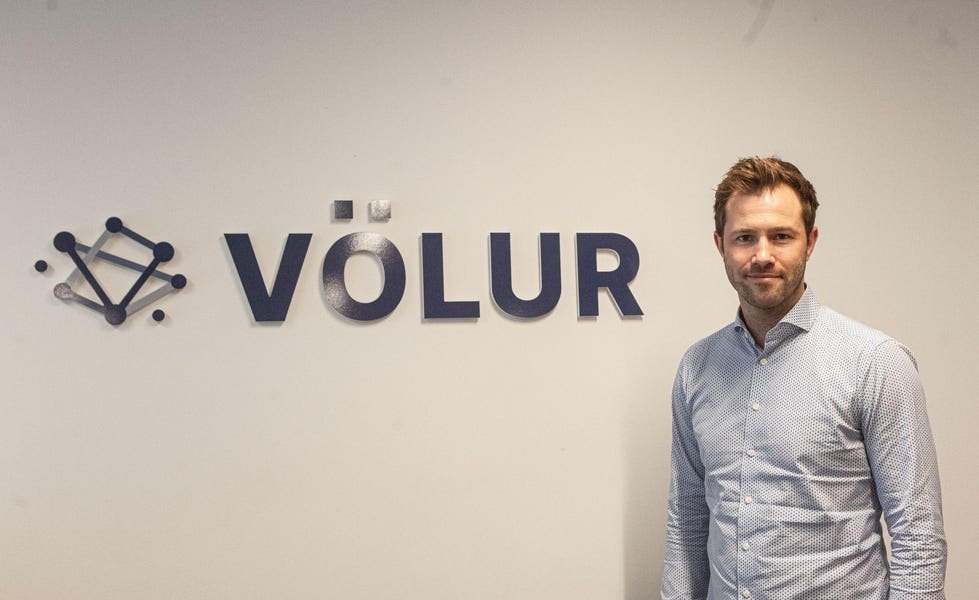With the help of data and AI-driven technology that can improve decision-making processes, optimize cutting and sorting procedures, and deliver environmental benefits to an industry responsible for 14.5% of global CO2 emissions, the traditionally conservative meat market is undergoing a significant transformation. Leading this innovative shift is a Norwegian company at the forefront of this endeavor.
Despite the well-documented advantages of reducing meat consumption to mitigate greenhouse gas emissions and promote better health, the meat market is projected to nearly double by 2050. This growth is being primarily fueled by the increasing global demand for meat products as more consumers seek access to such goods.
A key strategy recommended by the Oslo-based AI-software startup Völur to reduce emissions is collaborating with the industry to enhance efficiency by strategically allocating animals to products that align with consumer demand. Robert Ekrem, the CEO and co-founder of SGL, highlights that a substantial 24% of meat currently goes to waste during processing stages.
Völur’s technology is designed to optimize animal utilization in a low-margin industry by leveraging comprehensive industry expertise and minimizing the unnecessary use of animals.
Leveraging AI Technology for Enhanced Animal Utilization
The process of deboning animal carcasses and producing food items to meet consumer demands results in numerous outcomes. Robert Ekrem, with extensive experience in the food industry, recognized the challenges in this process prior to establishing Völur in 2019.
Ekrem emphasizes the importance of having systems capable of comprehending the inherent complexities of the industry to tailor product production to meet demand effectively. Currently, decisions are predominantly made using Excel and industry knowledge.
Meat processors, upon receiving animal carcasses, determine the products to be derived from them. However, the tools commonly used in this process often fall short in efficient implementation.
To optimize production effectively and meet demand requirements, Völur developed AI technology capable of analyzing supply and demand forecasts, animal characteristics, optimal cutting patterns, inventory levels, and pricing.
Ekrem explains that while meat processors typically utilize 95-96% of an animal, Völur’s tool enables the utilization of 100% by efficiently planning the utilization of bones based on their characteristics and the desired product inventory.
Völur’s comprehensive AI system caters to the entire meat industry, offering production plans that can be utilized for routine or long-term planning purposes.
Ekrem underscores that existing technology services in the meat industry often overlook precise information, positioning Völur as the pioneer in leveraging this untapped business potential.
By adopting Völur’s tool, Ekrem believes the industry can overcome challenges related to low margins, ensuring that meat supply aligns with demand to prevent market saturation and subsequent price reductions.
Striking a balance between supply and demand enables the production of appropriate goods at the right times, maximizes animal utilization, and minimizes the introduction of low-profit items into the market, Ekrem argues.
Navigating the Meat Market Landscape
Having extensive experience in the industry, Ekrem understands the sector’s resistance to change due to entrenched conservative practices. He emphasizes the importance of adapting to industry norms for success.
Völur’s adaptation requires the sector to transition from traditional make-sheets to a slightly modified digital format, a significant change for many industry players.
The tool is tailored for industrialized production, ideally suited for businesses with revenues ranging from \(20 to \)30 million.
Despite the industry’s historical reluctance to embrace innovation, Ekrem acknowledges early adopters within the sector.
Völur’s clientele includes prominent companies like Argentine JBS, venturing into plant-based meat products, and European Cooperl, recently announcing a partnership with the software company.
While the European company utilizes the technology for meat production, JBS plans to integrate Völur’s tools into its cattle operations in the US. Ekrem hints at upcoming contracts, signaling the company’s expansion into lamb and poultry production technologies.
Ekrem’s focus remains on cattle and pork due to their complexity, emphasizing their significant impact on waste reduction and production efficiency.
Addressing Emissions and Sustainability Challenges
Securing European investors has been challenging for Völur, as impact investment firms in the region prioritize sustainability in evaluating innovative businesses.
Increased scrutiny and backlash against the European meat industry, influenced by lobbying interests shaping farming policies, highlight the need for sustainability-driven reforms.
Conversely, American investors recognize the transformative potential of Völur’s systems across the sector.
Ekrem asserts that introducing AI systems could yield immediate reductions in emissions within the meat industry, potentially offsetting a significant portion of the sector’s CO2 footprint.
Enhanced animal utilization can lead to reduced animal requirements, eliminating the need for extensive inventories that often lead to market saturation and reduced margins.
This shift could have cascading effects, reducing energy consumption in storage facilities and minimizing the freezing of large quantities of food at ultra-low temperatures.
Implications for the Beef Industry
Updated animal welfare laws in Europe, emphasizing greater animal space access, may reduce the number of animals per farmer. While some stakeholders express concerns, maximizing the utilization of the 24% of beef currently wasted could incentivize producers to align supply with demand, potentially fostering greater acceptance of stringent animal welfare regulations.
By cutting costs on animal feed and healthcare, the meat supply chain could witness increased margins.
Efforts to optimize utilization may result in extended earnings and better alignment with market demand over time.






